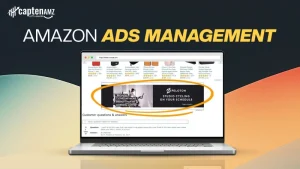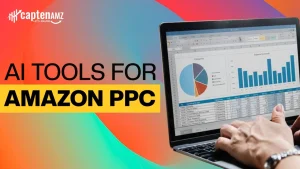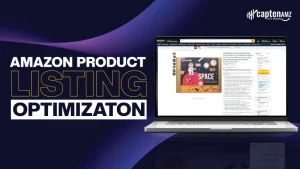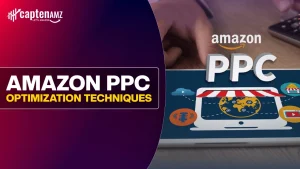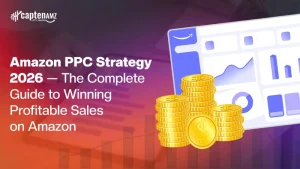Selling on Amazon is a promising way to build a profitable online business. But for beginners stepping into the e-commerce world, one central question often arises: FBA vs FBM, which is better for new Amazon sellers? Choosing between Fulfillment by Amazon (FBA) and Fulfillment by Merchant (FBM) can significantly impact your business strategy, costs, scalability, and customer experience.
In this blog, we’ll compare both fulfillment models in detail, explore the pros and cons of FBA and FBM, and help you decide which option suits your business best.
Table of Contents
ToggleWhat is FBA (Fulfillment by Amazon)?

Fulfillment by Amazon (FBA) is a service where Amazon stores, picks, packs, and ships your products on your behalf. Once your inventory is sent to Amazon’s fulfillment centers, they take care of storage, delivery, customer service, and even returns.
Key Benefits of FBA:
- Prime Eligibility: Your products become eligible for Amazon Prime, attracting loyal Prime customers and boosting conversions.
- Hands-Off Logistics: Amazon handles everything from warehousing to shipping and customer service.
- Higher Search Rankings: FBA products often rank higher on Amazon due to better delivery performance and Prime status.
Drawbacks of FBA:
- Storage Fees: You pay monthly and long-term storage fees, especially if your inventory is slow-moving.
- Less Control: You can’t control how your products are packaged or shipped.
- Complex Returns: Amazon’s automated return process may favor customers, sometimes causing losses to sellers.
What is FBM (Fulfillment by Merchant)?

Fulfillment by Merchant (FBM) means you, the seller, handle everything, from storing inventory to packing, shipping, and customer service. You list the product on Amazon but fulfill it from your warehouse or through a third-party logistics provider (3PL).
Key Benefits of FBM:
- More Control: You oversee packaging, shipping speed, and the entire fulfillment experience.
- Lower Fees: No FBA storage or fulfillment fees, which may lead to better margins for some products.
- Flexibility in Returns: You control your return policies and can vet returns before issuing refunds.
Drawbacks of FBM:
- Logistics Burden: You need to manage order processing, timely shipping, and customer service.
- No Prime Badge (Unless SFP): Without Seller Fulfilled Prime (SFP), your listings won’t be Prime eligible.
- Slower Shipping: Compared to Amazon’s 2-day Prime shipping, your deliveries may take longer.
FBA vs FBM for Beginners: What Should New Sellers Choose?

For those just starting, choosing between FBA and FBM depends on a few critical factors, such as budget, experience, business model, product type, and long-term goals. Let’s break this down.
1. Startup Budget
If you have limited upfront capital, FBM for small sellers might be a more feasible option. You won’t have to pay for Amazon’s storage, fulfillment, or inbound shipping fees. On the other hand, FBA benefits like Prime access and automation could offer quicker returns if you have some capital to invest.
2. Product Type
Bulky or oversized items with low turnover rates usually don’t do well under FBA due to high storage costs. In such cases, FBM is often more cost-effective.
Lightweight, fast-moving products? FBA is perfect. Amazon ships them fast, and you don’t have to handle the packaging chaos during peak seasons.
3. Time and Resources
Are you running this business solo or part-time? If yes, FBA may be better for beginners who want to automate most operations. You can focus on product sourcing, branding, and marketing.
If you already have an existing warehouse or a reliable third-party logistics (3PL) partner, FBM may give you more freedom and control.
4. Sales Strategy
FBA listings often get higher visibility on Amazon’s search results. They also win the Buy Box more frequently, giving new Amazon sellers a competitive edge. If you want to scale quickly, FBA’s infrastructure can help you do that.
FBM, however, gives you better control over multi-channel selling (e.g., Shopify, eBay) using your fulfillment system.
Search Visibility and the Buy Box

Winning the Amazon Buy Box is critical for driving sales. The Buy Box is the “Add to Cart” button on a product page, and more than 80% of sales go through it.
How FBA Helps You Win the Buy Box:
- Prime-eligible shipping
- Lower order defect rates (Amazon controls fulfillment)
- Fast delivery times
- Consistently high seller metrics
FBM Buy Box Limitations:
- Must meet strict performance metrics
- Without Seller Fulfilled Prime, you lose the Prime advantage.
- Must offer competitive pricing and fast shipping to compete
According to data from Amazon and Jungle Scout, FBA sellers win the Buy Box 20–30% more often than FBM sellers, especially when the customer prioritizes Prime shipping.
Need help winning the Buy Box or improving product visibility? We specialize in Amazon PPC strategy, catalog optimization, and listing creation. Visit our services to learn more.
FBA vs FBM and Amazon SEO
Amazon’s search algorithm (A10) favors listings with:
- Higher conversion rates
- Lower bounce rates
- Better customer reviews
- Competitive shipping speeds
FBA listings typically rank higher in search because of:
- Better delivery metrics
- Prime badge
- Higher conversion rates
FBM listings need to work harder on pricing, keyword optimization, and customer experience to remain competitive.
Prime Eligibility and Its Impact
Products with the Prime badge convert significantly better than non-Prime listings. According to Amazon data, Prime-eligible products see up to a 26% increase in sales compared to non-Prime items.
FBA listings automatically receive Prime eligibility.
FBM listings do not, unless enrolled in Seller Fulfilled Prime (SFP), which requires meeting strict performance metrics, including:
- 99% on-time shipping
- Same-day or one-day shipping options
- Low cancellation rates
- Weekend delivery capability
For most new sellers, enrolling in SFP is not immediately viable, making FBA a more beginner-friendly option for Prime access.
Scalability and Time Commitment
If your goal is to grow fast, FBA offers unmatched scalability. With Amazon managing warehousing and fulfillment, you can focus on:
- Product development
- Keyword optimization
- PPC campaigns
- International expansion
FBM becomes time-consuming as order volume increases. Manual tasks like printing labels, packaging, and handling customer inquiries can cap your growth unless you invest in a 3PL.
Risk Management and Business Flexibility
FBA:
- Pros: Amazon handles most risks related to shipping, inventory, and customer complaints.
- Cons: You are dependent on Amazon’s policies, and sudden fee changes or restock limits can affect your business.
FBM:
- Pros: Greater control over operations, better adaptability to platform shifts.
- Cons: Operational complexity increases risks related to late shipments and account deactivation.
Environmental and Branding Considerations
FBA products are shipped in Amazon-branded packaging. Sellers have limited control over the unboxing experience or add custom marketing inserts.
FBM allows for:
- Custom packaging and eco-friendly materials
- Brand inserts like thank-you notes or discount coupons
- Direct control over the customer touchpoint
This makes FBM more suitable for boutique brands or premium products focused on customer loyalty and retention.
International Considerations

If you’re selling across Amazon’s global marketplaces (such as Amazon Canada, UK, or EU), FBA offers the following advantages:
FBA Global Programs:
- Amazon Global Selling (AGS)
- FBA Export
- Pan-EU FBA (Europe)
- Remote Fulfillment (North America)
These programs allow FBA sellers to access international markets without setting up separate fulfillment systems. Amazon handles shipping and customer support.
For FBM sellers, international shipping requires:
- High shipping rates
- International logistics planning
- Customs declarations
- Customer service in other languages
Therefore, FBA is far more scalable for international expansion, especially for new sellers.
Seller Performance and Account Health
Amazon tracks various performance metrics for sellers, including:
- Order Defect Rate (ODR): Should be under 1%
- Late Shipment Rate: Under 4%
- Pre-Fulfillment Cancel Rate: Under 2.5%
FBA sellers generally maintain better metrics because Amazon controls the process.
FBM sellers are more vulnerable to:
- Missed handling times
- Stockouts
- Delivery errors
- Negative feedback
These issues can lead to account warnings or suspensions. For new sellers unfamiliar with logistics, FBA is usually the safer option.
Multi-Channel Fulfillment (MCF)
If you sell on Shopify, Walmart, Etsy, or your website, Amazon’s Multi-Channel Fulfillment (MCF) program allows you to use FBA inventory to fulfill those orders.
Advantages:
- Faster shipping on non-Amazon platforms
- Unified inventory management
- Reduced need for 3PLs
FBM sellers must either integrate a 3PL or fulfill orders themselves, increasing complexity for multi-channel expansion.
Strategic Recommendations for New Sellers

- Start Small with FBA: If budget allows, begin with FBA for the top 1–2 SKUs to test Prime conversion rates.
- Track Your Costs Closely: Use spreadsheets or tools like Helium 10, Sellerboard, or InventoryLab to monitor actual margins.
- Use FBM for Niche or Oversized Products: Products that aren’t a good fit for FBA due to size, value, or customization.
- Reevaluate Quarterly: Fulfillment strategy should evolve as your product mix, sales volume, and team capabilities grow.
- Explore the Hybrid Model: Mix FBA for fast sellers and FBM for specialty products for better margin control.
Common Mistakes New Sellers Make When Choosing FBA or FBM
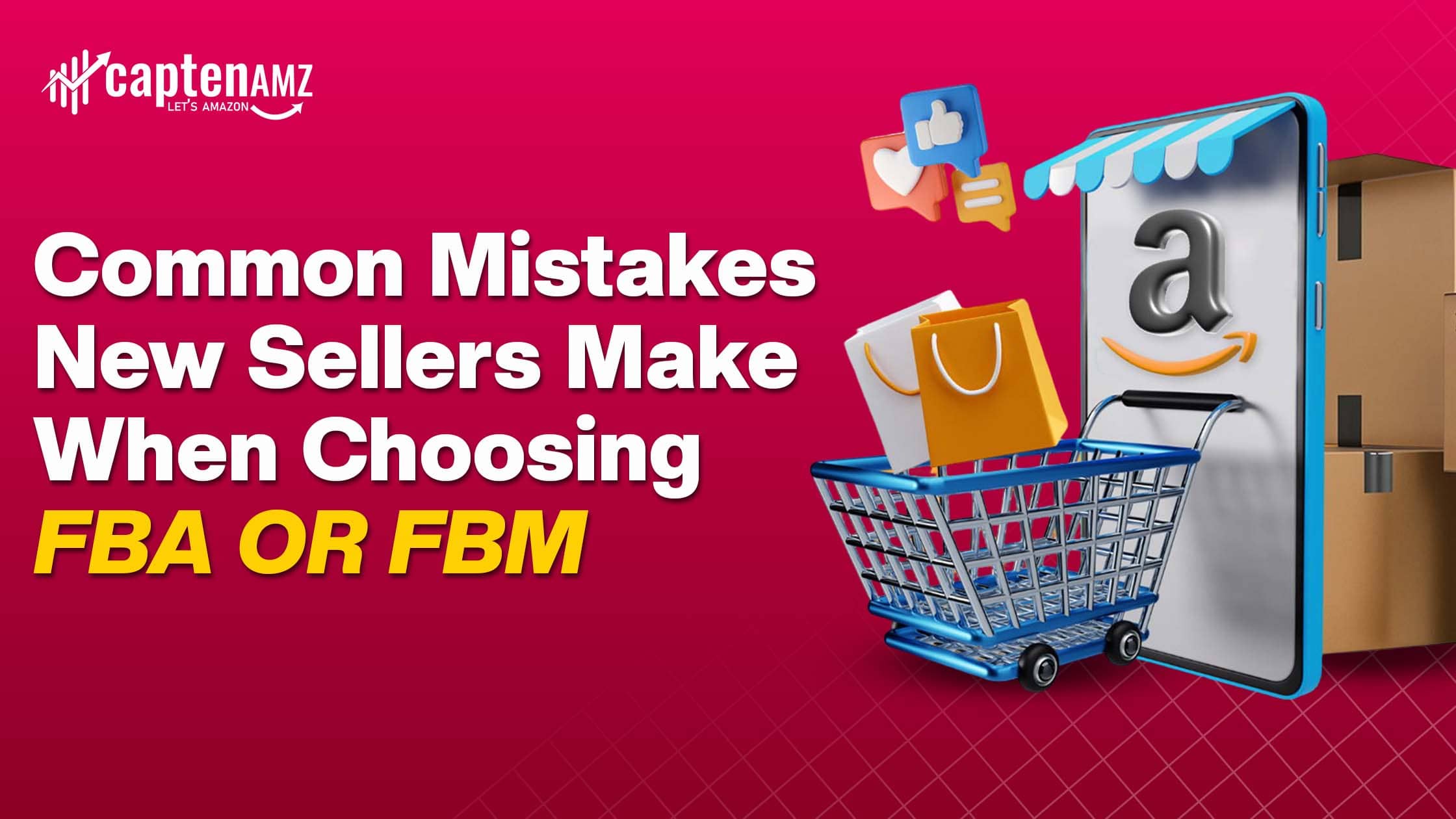
- Overstocking FBA without Research: High storage fees can eat your margins.
- Using FBM without Fulfillment Readiness: Missing orders or late shipments hurt your account health.
- Not Calculating Costs Properly: Use Amazon’s FBA Calculator to compare FBA vs FBM profit margins.
- Choosing Based on Hype: Just because everyone’s doing FBA doesn’t mean it fits your model.
- Ignoring Customer Experience: Whether FBA or FBM, fast shipping and quality service drive reviews and repeat sales.
FBA vs FBM Profitability: What Makes More Money?
There’s no one-size-fits-all answer. Amazon seller pros and cons vary by product, niche, and business model. Here’s how to calculate:
- Use the Amazon Revenue Calculator to plug in your product dimensions, price, and shipping cost.
- Compare FBA fees (storage + fulfillment) vs your FBM shipping and handling costs.
- Consider customer service time as a hidden cost for FBM.
In general:
- FBA may be more profitable for small, fast-selling items.
- FBM may be more profitable for high-ticket or slow-selling products with low competition.
Conclusion
There is no universally “better” model, only what is better for your business model, budget, and goals. New sellers are encouraged to start with FBA for simplicity and speed, then layer in FBM as they build operational capacity.
Need help deciding, optimizing, or scaling? Whether you’re stuck with listing suppression, unsure about A+ content strategy, or want to reduce ACoS with better ads, our team can help you move faster.
Visit CaptenAMZ for full-suite Amazon support, from product optimization to PPC.


